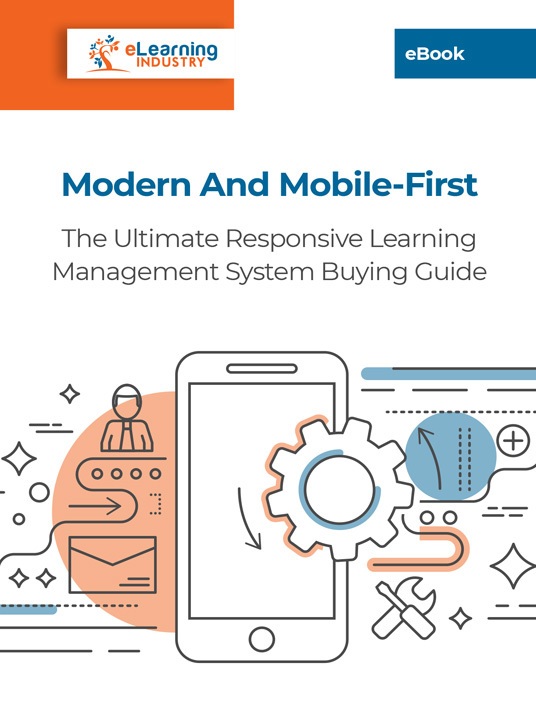Pitfalls To Avoid When Implementing A Mobile LMS
They say not to sweat the small stuff. That’s easier said than done when the small stuff snowballs into something more serious. For example, you may choose the wrong eLearning authoring tool and this leads to high replacement costs and long delays. Fortunately, knowing about these oft-repeated mistakes can help you avoid them in the first place so that you don’t have to deal with costly cleanup after the fact or the L&D stress that comes with it. Below are 8 mobile LMS implementation mistakes and misconceptions you should know before investing in a new responsive Learning Management System.

1. Unclear Budget
You have a round figure of how much you hope to spend and what that entails, for example, the features and functions you need to get the best ROI. However, it takes a detailed budget to successfully implement mobile learning solutions. One that includes outsourcing expenses, subscriptions, and mobile training content creation. Unclear budgets put your entire corporate eLearning project at risk because you may run out of funding before roll-out. So, plan ahead and don’t leave anything to chance. Develop a backup plan for potential resource-drainers and ensure that every expense ties into measurable online training objectives and desired outcomes.
2. No Mobile LMS Implementation Timeline
Everything will run its natural course and happen when it’s supposed to. This might be a solid mantra for well-being but it’s damaging for your fiscal health. You need a realistic responsive LMS implementation schedule that includes all relevant tasks and milestones, as well as resources that are required for every phase of the corporate eLearning project. Meet with your team to map out their workflow and give them a sufficient amount of time for their job duties. This also allows you to carve out their niche in the overall plan. For instance, the SME must provide info before the mobile training content creator can develop JIT resources.
3. Incompatible eLearning Tools
One of the most common misconceptions is that all responsive learning tools are compatible. But this couldn’t be further from the truth. While some support SCORM 2004, others rely on Tin Can API specs. Thus, you must ensure that all your eLearning tools are compatible and communicate on the same tech wavelength. Conduct an asset inventory before you purchase your new mobile LMS and use free trials to test their compatibility.
4. PC-Based Online Training Content
You already have an online training library of valuable training resources you can simply migrate to the responsive LMS. No need to convert any of the online training content, right? The truth is that PC-based resources don’t always translate to the small screen. Bulky multimedia files take too long to download, or users need to pan or zoom to view the entire eLearning infographic. The Learning Management System automatically optimizes the viewing experience based on the user’s device. But you must set breakpoints and fine-tune the layout to help the process along.
5. No eLearning Feedback
eLearning feedback is an ongoing loop. You gather feedback from your L&D and HR teams to streamline mobile training while providing eLearning feedback to employees via the responsive LMS so that they can continually develop their talents. Conduct surveys and online training assessments to see where they’re at and identify potential gaps. There should also be an integrated eLearning feedback system for the mobile training system to ensure it still aligns with your online training needs and that users are still able to access crucial L&D resources on modern devices. If not, you might consider a new eLearning tool that incorporates the latest responsive technologies to keep up with the times.
6. Not Testing On Different Devices
The mobile training content may look amazing on one device and completely askew on another. For this reason, you must access mobile training resources on different devices and browsers to identify eLearning design flaws. Many responsive LMSs come with built-in previewers so that you can evaluate the mobile training content across platforms. Then revise the layout to provide the best possible viewing experience for every mobile user. Lastly, solicit learner feedback regarding each eLearning tool performance. Which device did they use and where there any technical issues? Were they able to access the JIT library offline? Could they download training content on their smartphone and then complete it on the PC browser?
7. Putting Features Above Functionality
You’re so focused on a feature-packed platform that you forget about the usability. Your team has a variety of new functions. However, they’re unable to navigate the LMS thanks to complex UI. Features are important when choosing a new mobile learning system. But functionality should always come first. This is yet another reason why free trials are so crucial. They give your team the chance to test out the interface and ensure it aligns with their experience levels and tech skills.
8. Not Using Available Research Tools
There’s no excuse for not using online directories, review sites, and social media groups to find the right mobile LMS for your business. These resources are free to use and contain valuable tips and techniques to help you make the best investment. Granted, there are some biased sites that you should be aware of, such as sponsored reviews or ratings. Look for reliable platforms that have been around for some time.
Another common misconception is that mobile LMS implementation is out of your price range. That your organization simply can’t afford the latest and greatest mobile learning technologies. Startups and SMBs can find budget-friendly options that allow them to deploy mobile learning content with limited resources. The key is knowing where to look. Start with an LMS online directory, then visit vendor sites to evaluate their selling points and request more info. Many vendors also offer free demos or limited-time trials to help you choose the best Learning Management System for your budget.
If you want to provide quick, convenient, and meaningful learning experiences to your workforce, download the eBook Modern And Mobile-First: The Ultimate Responsive Learning Management System Buying Guide. You will find insider secrets that will enable you to choose the ideal mobile training platform in order to provide top-notch mobile training and JIT support even when your employees are away from the office.

